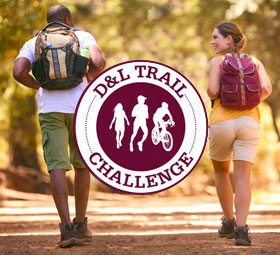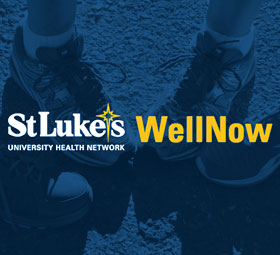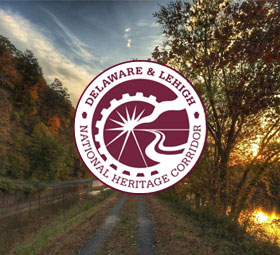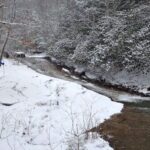5 Food Tips for Camping and Hiking
5 Food Tips for Camping and Hiking
Contributors: Jackie Newgent, RDN, CDN
Do you have hiking or camping on your agenda? Mapping out your wilderness nutrition needs is important: There’s plenty to consider besides simply grabbing an energy bar or a bottle of water. Follow these tips to ensure you have a nourishing and safe food experience on your next outdoor adventure.
1. Have a Plan
Your food and water needs are generally higher than usual on activity-based excursions. Pay extra special attention to packing plenty of fluids for hot weather adventures. Some other key considerations before your hiking or camping trip include:
- Length of the trip
- What foods and beverages you’ll carry
- How you’ll eat and drink
- If bringing a cooler is an option
- What food-related tools you’ll need
2. It’s Essential to Stay Hydrated
Pre-hydrate by drinking at least 4 cups of water before a hike so you have less to carry. Then, a good rule of thumb is to plan for about 2 cups of fluid for every hour of hiking. Make sure you can bring or access clean drinking water during your hike.
3. For a Hike or Day Trip…
You can pack perishable foods, such as sandwiches, just be sure you have a cold source (such as an ice pack) to keep foods properly chilled to below 40°F. The more you stash in a backpack, the harder it is to hike, so opt mainly for non-perishable foods that are relatively lightweight and nutrient dense, such as:
- Trail mix
- Nuts, seeds, nut-based bars or nut butter packs
- Fresh, whole fruit that doesn’t require refrigeration such as apples, bananas and oranges
- Dried or freeze-dried fruits and veggies
- Energy bars, chews or gels
- Granola or granola bars
- Ready-made tuna salad pouches
- Whole-grain tortillas
- Shelf-stable, dried jerky, such as poultry, salmon or meat jerky
4. For Camping or Multi-Day Trips…
It’s a little more challenging to pack food for days at a time. The first day you’ll be able to eat perishable foods if you have a cooler; but after that, map out your meals so you’ll have what you enjoy and need. Otherwise, include any of these shelf-stable, easily-packed basics to sustain you:
- Easy-to-carry foods mentioned above
- Ready-to-eat cereal
- Fruit or vegetable puree in squeezable pouches (such as applesauce)
- Poultry or fish pouches, or canned fish, poultry or meat in individual or regular servings
- Individual packets of mayo, mustard, taco sauce and/or soy sauce
- Whole-grain pasta, couscous, rice mix, pancake mix, hot cereal, dried soups and dehydrated foods (if you have the ability to boil drinkable water)
- Marshmallows — for a campfire dessert, of course
- Bottled water, and possibly powdered beverage mixes
5. Don’t Forget Proper Food Safety Practices
Always follow good food safety practices — from packing to plating. Remember that perishable food cannot be kept out in hot weather (90°F or higher) for more than one hour; in mild weather for more than two hours. Otherwise, these foods become unsafe to eat and should be thrown out. Bring these food safety essentials:
- Disposable wipes, hand sanitizer or biodegradable soap
- Bowls and plates
- Kettle or cooking pot
- Eating and cooking utensils
- Can opener
- Ice packs, if applicable
- Trash bags
- Portable water filters or water purification tablets
- Thermometers for cooler and cooked meat, if applicable
And follow these food safety rules:
- Wash hands often. This includes before and after eating. If you’re unable to wash your hands, a hand sanitizer with at least 60% alcohol may help reduce bacteria and germs.
- Keep raw meats and ready-to-eat foods separate. Use extra plates that you’ve packed — one for raw and one for prepared foods.
- Cook to proper temperatures. Use a food thermometer to be sure cooked food has reached a safe internal temperature.
- When possible, refrigerate promptly below 40°F. Of course, if you don’t have a fridge, pack perishable food, including meat or poultry, with plenty of ice or ice packs in a well-insulated cooler to keep the temperature below 40°F. Store leftovers in small, clean covered containers in the cooler only if it still has ice. And keep the cooler in as cool a place as possible.
Now, go take a hike!
Jackie Newgent, RDN, CDN, is a Brooklyn-based culinary nutritionist, writer and media personality.
5 Food Tips for Hiking and Camping, www.eatright.org, published 6/15/22, accessed 6/27/2022




